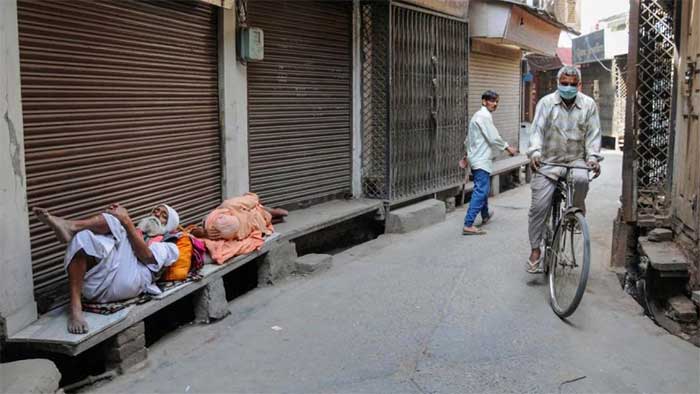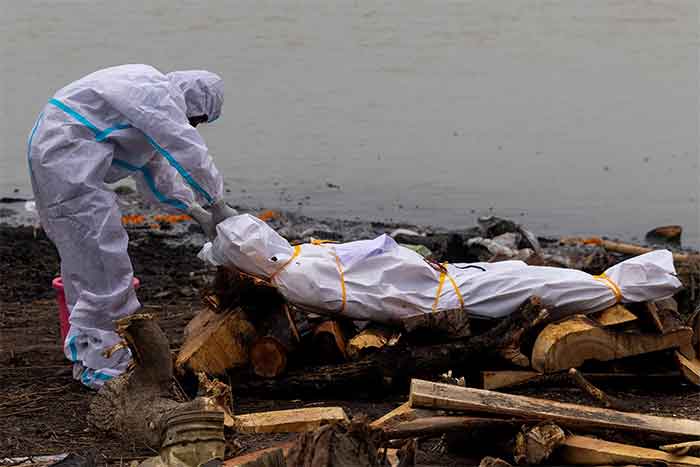
COVID-19 (Coronavirus disease) is novel in many ways. It has affected 155 countries till date with ever-changing case numbers (283,00 worldwide) and mortality rate pegged at 1 percent with inter-country variations. This rapid rate of spread occurred in barely 3-4 months with first case suspected to have reported in China in November 2019. The world has witnessed the extraordinary containment efforts taken up by China when the initial outbreak was limited to a geographically specified area – Wuhan city in Hubei province.
Transmission of COVID-19 is similar to the seasonal influenza virus that spreads via respiratory droplets. Thus, over time, it is bound to infect millions as being predicted by public health experts. As such predictions emerged, politicians in USA, Europe and India started adopting unprecedented measures to contain the outbreak. Some of these efforts are certainly laudable. In times such as these, a critical evaluation and assessment of such measures is lacking in the name of urgency to act. However, what if some measures hurt more than help? It is paramount to ‘do no harm’, the basic principle of medical practice.
First, it is high time to examine the efficacy of the much-touted concept of social distancing. It certainly makes sense and the oft repeated term of ‘flattening the curve’ of new cases seems to be logical as well. But, in their urge to act, have the politicians and experts ignored the fact that a disease does not exist in its own independent sphere but it has to be considered in a socio-economic context? Take, for example, in a country like India that has 1.38 billion people with an estimated 800 million people that are considered poor. Typically, that would mean multiple people living in a single room in crammed spaces and more importantly millions that live on the streets. What kind of ‘social distancing’ can these bottom two-thirds (or more) of the population practice? From a livelihood perspective, almost all poor households eke out a living dependent on their interactions with the society around them. For example, a street vendor’s lifeline is the presence of a lively street, a maid cannot practice isolation for weeks which would not only impact the maid but also the conveniently situated master in the house. Countless young kids are dependent on the school meal programs and they go hungry when the school is closed. Thus, it is not only impractical but also downright haughty to prescribe social distancing to a country with vast income inequalities where people are left to fend for themselves. While the United States is certainly considered rich, each and every city is a testament to vast social disparities. The rich and desirable neighborhoods could be the best in the world but they coexist in a city with rampant homelessness (for example, Los Angeles, Washington DC and New York, to name a few). The tales on the homeless side of the town would appear to be as sordid as from a third world country. Every night, about half a million people sleep on the streets in one of the world’s richest countries. Do the leaders that promulgated ‘stay at home’ ordinances have a plan for these hapless individuals? Can’t a virus that spreads by droplet transmission infect these individuals and thereby contribute to more cases in the society as a whole? In a country that lives and thrives on capitalism, a blanket shutdown of tourism, aviation and restaurant industries would only mean livelihood loss for millions. Is there an estimate of what that translates in to in terms of jobs lost that would only eventually mean lives lost? Is it all going to be worth the COVID-19 cases prevented by social distancing? There is certainly economic stimulus planned by the US Federal government that is being talked about. However, it would only go so far as witnessed in the 2008-09 economic crisis. There are millions that do not fall in the ‘stimulus’ umbrella. There are countless people that are undocumented but still form the basis of the working-class economy that would not qualify for such a stimulus. They, in turn, would affect the lives of others that live around them. These should have been the considerations before taking the extreme step of bringing the economy to a grinding halt. Now, it’s already too late. Also, of note, China was able to provide basic supplies to all its citizens affected by the lockdown. The government even transported medical professionals to the hospitals themselves so lockdown was universal and truly effective. Is it even remotely possible in a capitalist society such as the USA or in a broken system such as in India to do such a thing?
It is not the intention of this article to downplay the unfolding pandemic. It is important to look at what else can be done that is also extraordinary but at the same time does not hurt the working class as much. China has already shown the world the path. While the politicians in India and USA cherry picked what they can easily do in this crisis, they conveniently ignored the arduous tasks. China built a 1000-bed hospital exclusively to handle coronavirus cases in Wuhan, the epi-center of the outbreak. It is sheer grit, determination and loads of money that go in to such an exercise. The argument being made for social distancing and isolation is to reduce the number of cases that would be seriously ill and require mechanical ventilation. In such a case, what should happen on a war footing is building new hospitals and manufacturing ventilators at a break-neck speed. USA did such an exercise of mass manufacturing during the World War II years albeit on the weapons side but why can’t it be replicated now? On the contrary, if countries are shut down en masse, leave alone ventilators but even personal protective equipment (PPE) crucial for healthcare workers are in scarcity today even in USA. On the frontlines of fighting this virus, when the sickest patient gets admitted to an ICU (Intensive Care Unit) in USA (the writer is managing patients with suspected COVD-19) with a respiratory problem, confirming COVID-19 that involves a PCR (Polymerase Chain Reaction) test for the viral RNA (Ribonucelic acid) is taking 6 days (or more) to result as of today (varies by city and state). It can only be imagined how much longer it would take elsewhere. China, again, has led the path and is far ahead in testing for COVID-19. Yet, the world leader in Trump chose a racial epithet for the virus rather than focusing on collaborating with the Chinese in making test kits widely available.
It is also worth noting that the symptoms of COVID-19 are vague and overlap with any respiratory illness such as the garden variety cold, influenza and a host of other bacterial infections. In such scenario, responses should be measured and focused on catering to the utmost sick and needy. It is intuitive to presume that mortality rate being higher in certain countries is likely linked to late presentation to the hospitals and delays in implementing mechanical ventilation. Because, at the end of the day, COVID-19 is a respiratory illness and cause of death most often would be Respiratory failure. It circles back again to the need for more ventilators and well-equipped hospitals. Not all countries can build a 1000-bed hospital in 7 days but may be it is possible to do it in 30 days in a crisis such as this. Countries such as India and USA can aim for building at least 1 such hospital per state and divert critical cases there. Instead, what is happening today is suspension of routine medical care for other patients in existing hospitals in anticipation of a surge in COVID-19 cases.
If the crackdown-loving leaders show the same will power, they can easily obtain funds for new hospitals from their billionaire class. Cuba has also shown how to effectively train medical professionals and it is worth borrowing from them. Rather than shutting down the economy and coming up with a stimulus package, responsible leaders with conviction would focus on diverting funds towards such productive projects that will result in long-lasting infrastructure and disaster preparedness that will also benefit future generations in fighting new illnesses. COVID-19 will not be the last of these pathogens. There will be more to come as history has shown us if we look back at Small pox, Plague and H1N1 to name a few.
I ardently wish I am wrong on this but it appears that the modern-day world leaders aided and abetted by the all-assuming tech-savvy, social media-crazed global citizenry have taken this too far now and only history will tell us if the aftermath of this shutdown would take more lives than the dreaded virus itself.
Dr Nijam Gara is a rationalist thinker based in the US. His articles are devoted towards voicing the concerns of downtrodden and marginalized communities.
SIGN UP FOR COUNTERCURRENTS DAILY NEWS LETTER
















































